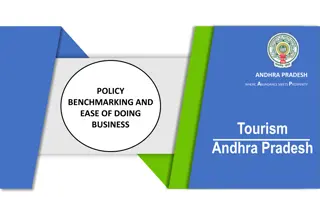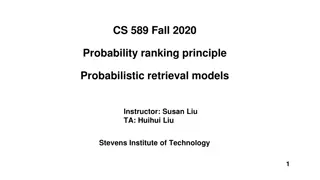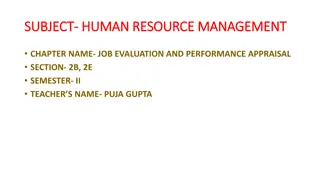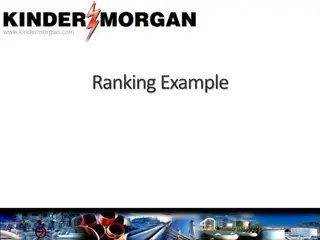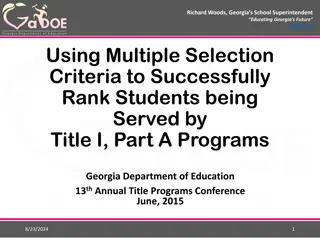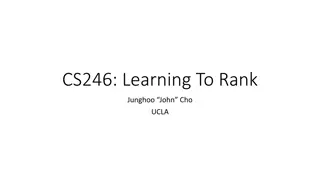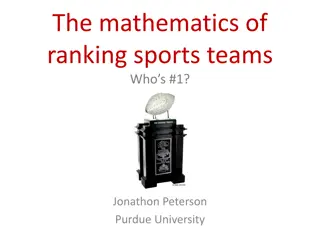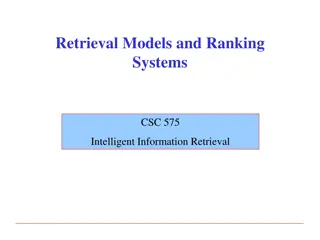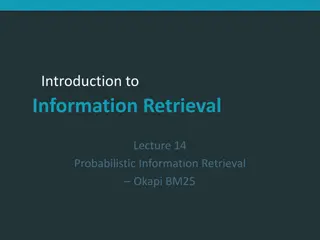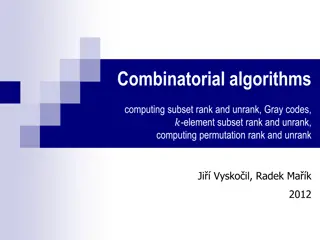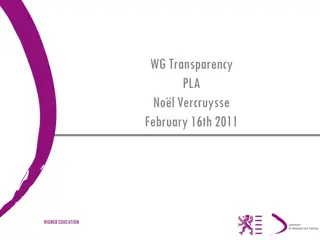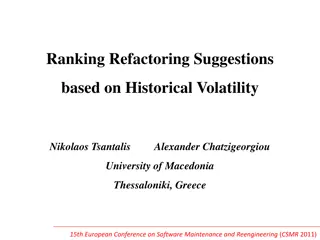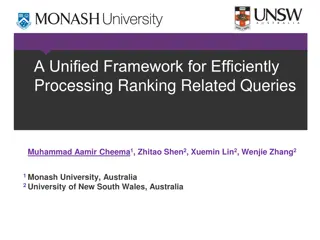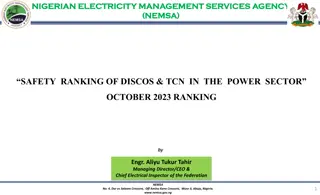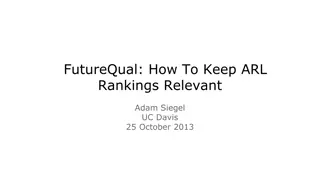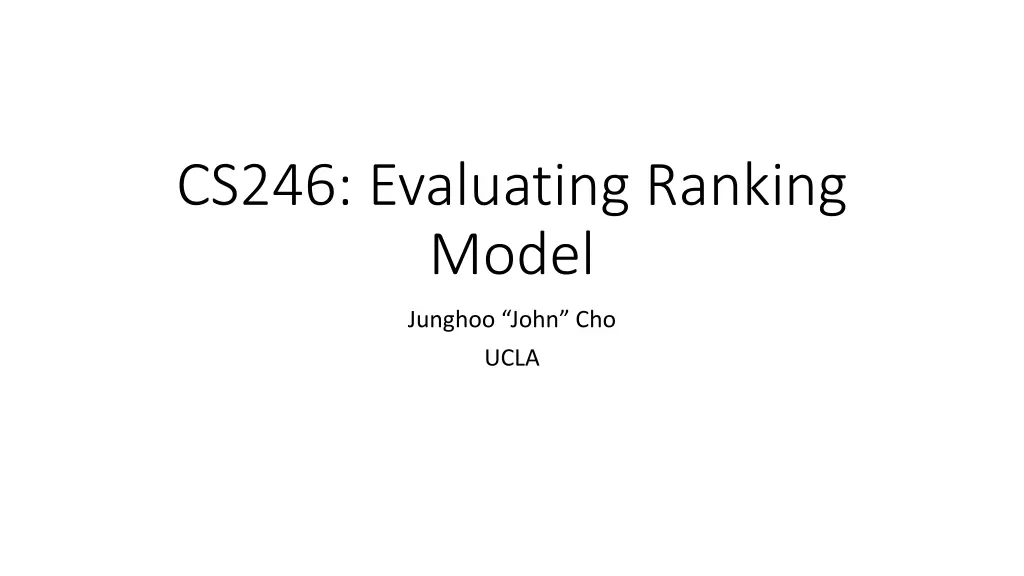
Key Concepts in Evaluating Ranking Models for Information Retrieval
Explore the critical concepts in evaluating ranking models for information retrieval, including the bag of words assumption, phrase queries, and different evaluation metrics like Precision@k and Mean Average Precision (MAP). Understand the nuances of ranking systems and how relevance is determined to improve search outcomes and user experience.
Download Presentation

Please find below an Image/Link to download the presentation.
The content on the website is provided AS IS for your information and personal use only. It may not be sold, licensed, or shared on other websites without obtaining consent from the author. If you encounter any issues during the download, it is possible that the publisher has removed the file from their server.
You are allowed to download the files provided on this website for personal or commercial use, subject to the condition that they are used lawfully. All files are the property of their respective owners.
The content on the website is provided AS IS for your information and personal use only. It may not be sold, licensed, or shared on other websites without obtaining consent from the author.
E N D
Presentation Transcript
CS246: Evaluating Ranking Model Junghoo John Cho UCLA
Bag of Words Assumption Q: What is a user looking for using the query Boston University ? Q: Given our bag of words assumption, will the page be ranked higher than others? Q: Is there any way to get around this problem? 2
Phrase Queries Find documents with Boston University exactly in this sequence Q: How can we support this query? Two approaches Biword index (more generally, n-gram index = shingles) Positional index Q: Pros and cons of each approach? Rule of thumb: x2 x4 size increase for positional index compared to document id only 3
Evaluation of Ranking Model ?: set of relevant document ? : set of documents returned by the system Under boolean model Precision Among the pages returned, what fraction is relevant? ? = ? Recall Among the relevant pages, what fraction is returned? ? = ? Q: Can we use the same evaluation for ranking model as well? ? ? ? ? 4
Evaluation of Ranking Model Q: What is ? ? There is no ? ! Option 1: Consider Top-k ranked documents as ? : Precision@k Reasonable evaluation metric for a large corpus Many matching documents Users are unlikely to look past, say, top-20 documents 5
Evaluation of Ranking Model Q: Why k=10, not k=20? Both are important! Option 2: Compute average precision over all k! Average Precision for query AP(?): Take precision average over all recall values AP(?) = 0 Area under the precision-recall curve (AUC) Mean Average Precision (MAP) Mean of average precision over all queries |?| ? ?AP(?) 1? ? ?? = ?=1 ? ? ? ?(?) 1 6
Evaluation of Ranking Model Q: Is ? really binary? Is there a clear the boundary of ?? Option 3: Assign ground-truth relevance score ? to each document Say, 1 ? 5 (1: not relevant, 2: marginally relevant, , 5: very relevant) Q: Then what? Sum up relevance scores of top-k documents Cumulative Gain at k (CG@k): ?=1 Q: But top positions are much more important to users than 5th position! C: Collection R ? ?(?) No clear boundary 7
Evaluation of Ranking Model Discounted Cumulative Gain at k (DCG@k) Weigh higher-positions more than lower positions ???@? = ?=1 log2(?+1) Normalized Discounted Cumulative Gain (nDCG) Normalize ??? such that 0 ???? 1 Divide ??? with the maximum possible ??? value for the dataset Ranking highest score document to the lowest score document Q: Why log()? Consistent distinguishability [Wang 13] For (almost all) random dataset, NDCG consistently identifies a ranking function better! ?(?) ? 8
References [Wang 13] A Theoretical Analysis of Normalized Discounted Cumulative Gain (NDCG) Ranking Measures by Y. Wang et al 9

